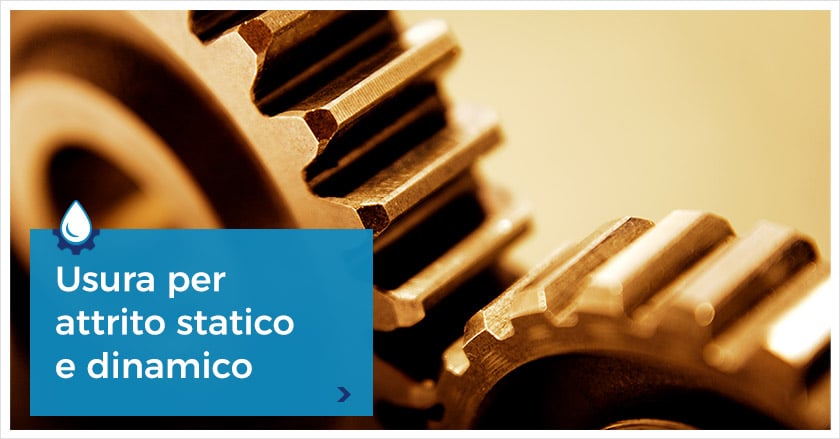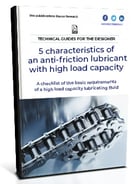
"Wear due to static and dynamic friction"
Alternating static and dynamic friction and their continuous action on the mechanical components inevitably lead to their wear, or even to malfunctioning and breakage if excessively neglected.
The use of lubricants therefore becomes essential to preserve the integrity of the materials used in your project or that make up your machinery as much as possible.
Friction is defined as a passive contact force, which is generated with the contact between two surfaces and opposes the movement of a body.
The frictional forces are different and of different types, but mainly three types are distinguished:
- Sliding: when two bodies crawl over each other
- Rolling: when one body rolls on the surface of another
- Viscous: when a body moves in a fluid
Among these, sliding friction is in turn divided into two forms:
- Static friction, is what characterizes two bodies initially in a state of rest (stationary) when you try to exert a force in a direction parallel to the surface to generate movement (First principle of dynamics: a body at rest cannot start to move unless a force acts upon it)
- Dynamic friction, the resistance that occurs when a body is already in motion on a surface (lower than static friction precisely because the body is already in motion and therefore requires less force).
Usually static and dynamic friction are present at the same time, since once the first ceases and therefore the component starts to move, at that precise moment the second takes over. This involves a continuous stress on the part of your mechanical component, which requires good maintenance and above all lubrication.
Static and dynamic friction: how to lubricate
With a dedicated and specific lubricant solution for your mechanical components you can avoid these unpleasant inconveniences, which, depending on the severity, can also block the entire production.
The importance of the lubricant increases in proportion to the size of the contact surface and the increase in temperatures. In fact, the so-called "limit friction condition", that is when + 50% of the surface of the mechanical components are without the covering of the lubricating film, is reached through prolonged extremely severe operating conditions for the mechanical components over time:
- very high workloads
- temperatures too high
- temperatures too low
- presence of very aggressive fluids
When we talk about static and dynamic friction together, always remember that the static one is about 3 times the dynamic one in strength and intensity, so it is essential that your lubricant is first of all able to reduce it.
Static and dynamic friction: the 5 requirements
As regards anti-wear lubrication deriving from static and dynamic friction actions, it is necessary to provide a lubricant with a high load capacity and low coefficient of friction.
In order for it to be useful for the functioning of your mechanical components, there are 5 basic requirements it must have:
- adequate chemical composition of the base oil
- presence of solid lubricants in its formulation
- presence of anti-wear additives (AW) and extreme pressure (EP)
- very high viscosity level of the base oil
- high thermo-oxidative capacity.
To find out how to reduce static and dynamic friction in your mechanical components and create your own customized lubricant solution, click below and download our guide on anti-friction lubricants for free.
Heavy duty lubricants
Complete guide to the key features

A complete identikit of a lubricating fluid with high load capacity and low coefficient of friction



